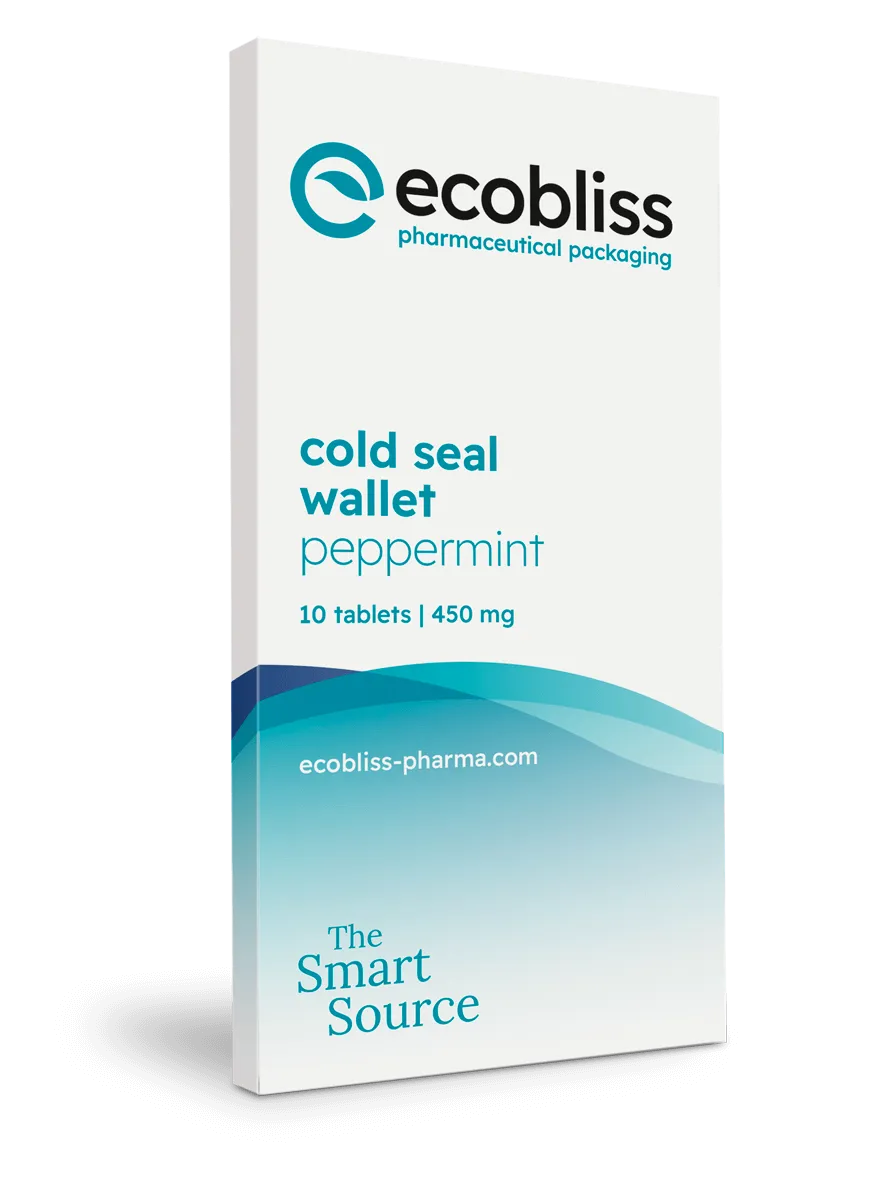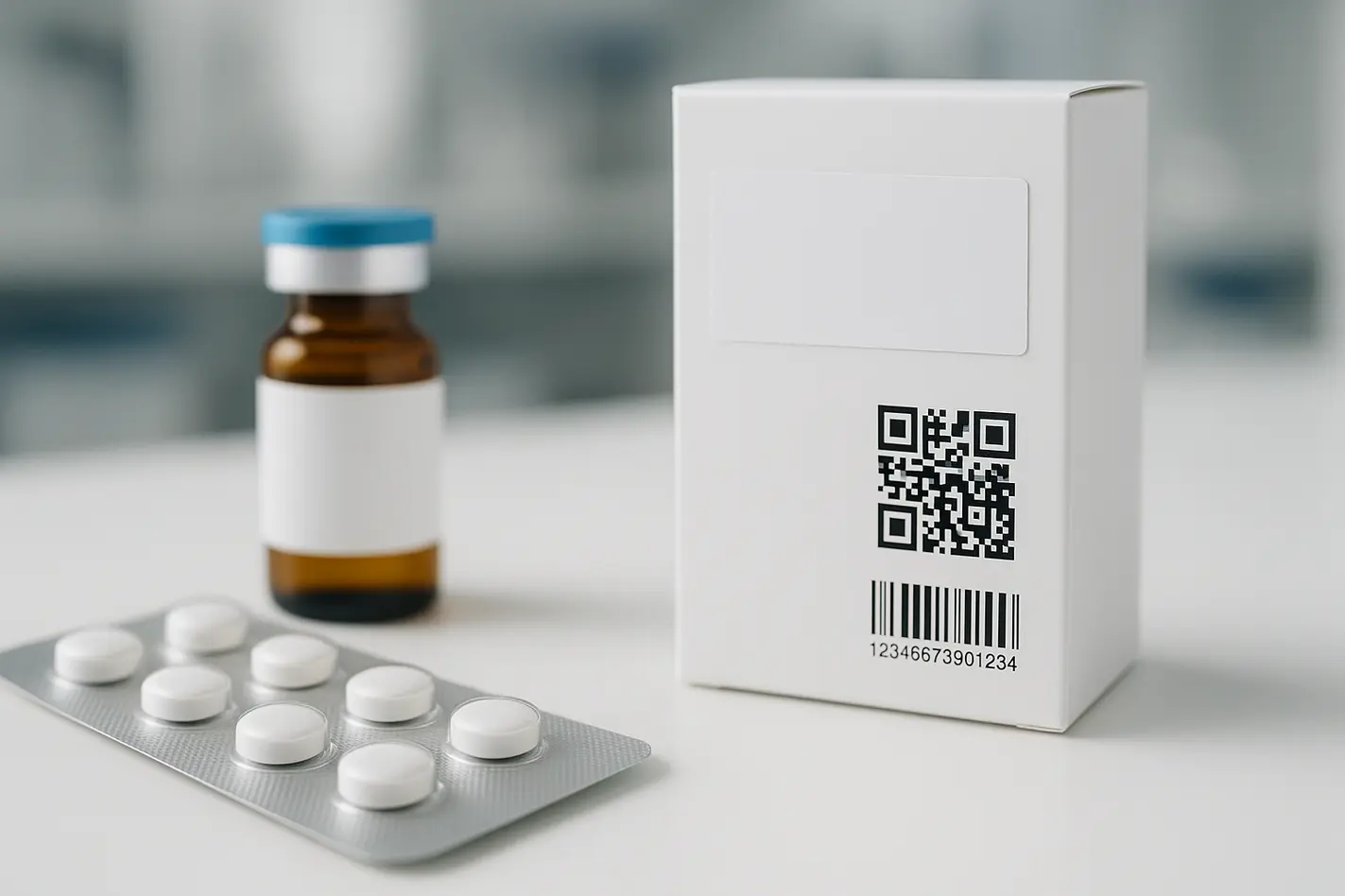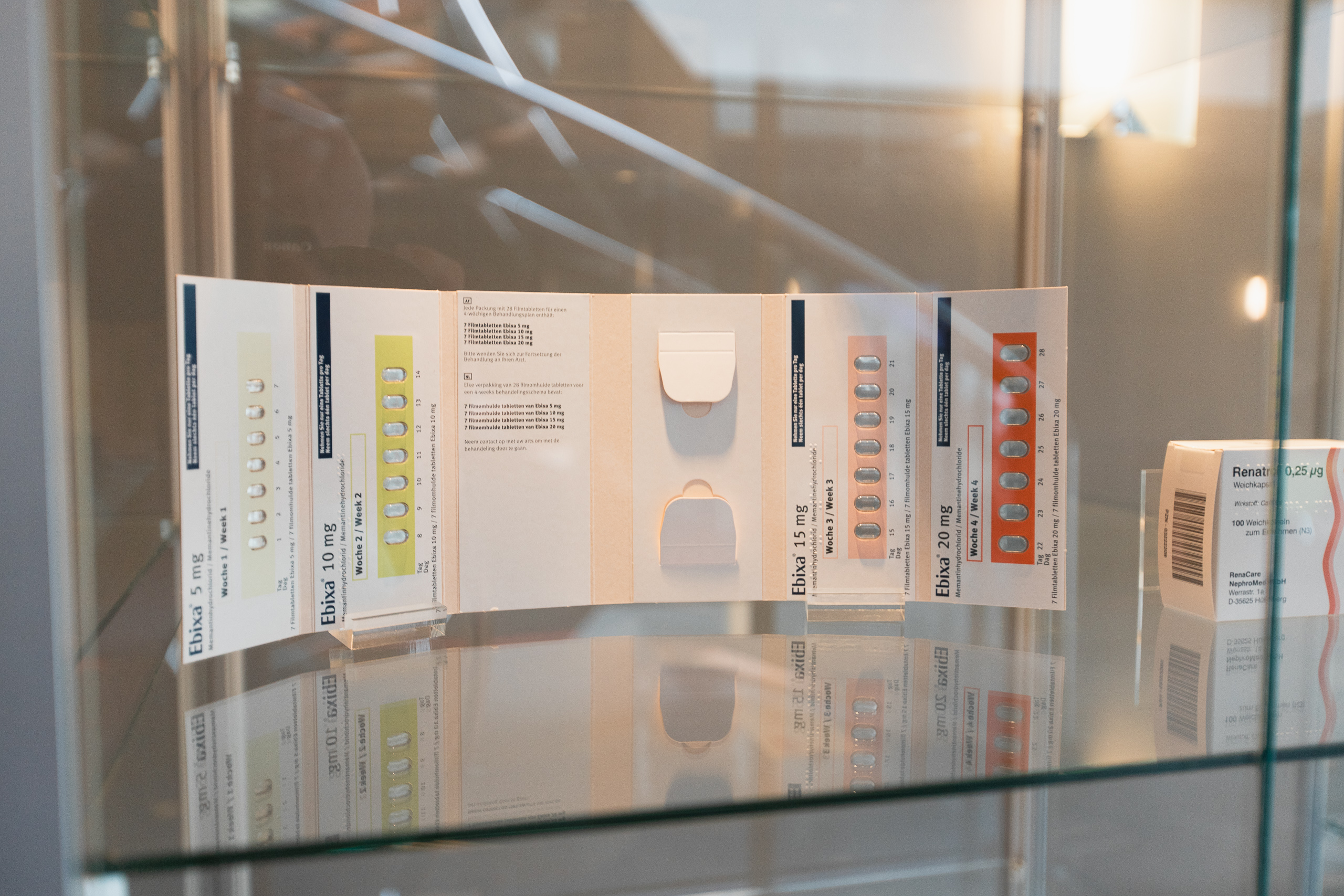Serialization and authentication packaging gives each medicine pack a unique code and protection layer. It helps trace products through the supply chain and shows that the pack is real, sealed, and safe to use. These features are required in the EU and US to prevent counterfeiting, support recalls, and protect patients. This guide explains the key steps, rules, design points, and quality controls pharma teams need to manage.
• Serialization uses a GS1 barcode with GTIN, serial number, lot, and expiry to track each pack.
• Authentication adds tamper-evidence and other features to confirm that the pack is genuine.
• The EU and US require these features for most prescription drugs, with scan checks at pharmacies.
• Aggregation links packs to cartons and shippers for easier handling and better returns or recalls.
• Early design decisions help avoid barcode errors, packaging delays, and compliance problems.
Why serialization and authentication matter
Serialization and authentication packaging protects medicines from being copied or changed. This is important because fake products can harm patients. Adding a unique code on each pack shows where it came from. Tamper-evidence helps assess if the pack was opened and makes sure the content is trusted.
The European Falsified Medicines Directive (FMD) requires serialization and tamper-evidence on most prescription drugs. In the US, the Drug Supply Chain Security Act (DSCSA) is pushing for full tracking of each pack. This change will apply to all supply chain partners by late 2025. These rules aim to protect public health and strengthen tracking.
What serialization means in medicine packaging
Serialization adds a unique code to every pack. This is printed as a 2D barcode, usually a GS1 DataMatrix, and shown in numbers and letters too. It includes these details:
• GTIN - Global Trade Item Number: identifies the product
• Serialnumber - Random andunique for each pack
• Lot - Batch or group the pack belongs to
• Expiry - Use-by date
Once printed, the code is added to the tracking system and connected to supply chain data. Aggregation links this pack to its carton and shipping box. When logistics partners scan the box, they see data about all units inside. At each handover, partners log actions like shipping or receiving. If a product is sold, returned, or removed, the code is removed from the system using EPCIS standards to record each status change.
Authentication packaging and pack safety
Authentication adds extra protection that helps users see if the pack is real and not opened. These features include tamper-evidence, which is required in the EU. Common devices include glued tabs or tear strips that clearly show damage if opened.
Authentication can use different features:
• Overt: easy to see, like a hologram
• Covert: hidden, visible only with tools
• Forensic: tested only in a lab
High-risk products may need several layers of protection. ISO 12931 gives advice on how to choose and test the right features. Teams should write clear validation plans that list who checks the packaging, when, and how.
Serialization rules in the EU and US
EU rules from the FMD require each prescription medicine pack to have a barcode and visible tamper-evidence. Most EU countries follow this rule. Pharmacies check packs using scan systems before giving them to patients.
US rules under the DSCSA require full electronic pack tracing by November 2024. Enforcement will adjust through 2025. Code data must follow EPCIS standards, so all partners can verify tracked history. This affects how manufacturers, sellers, and pharmacies work together and share product information.
Aggregation and why it helps teams
Aggregation connects each serialized pack to a carton and then to a large shipping case. This makes scanning faster in large shipments. Logistics teams can scan one code and get full details of all included packs. It saves time and supports product returns, recalls, or audits.
If aggregation is missing, teams must open boxes and scan packs one at a time. This slows down tracking and raises the chance of errors. When done well, aggregation keeps the supply chain clean and efficient.
How pack design affects traceability
Barcode quality depends on the pack surface and layout. The area around the barcode must be free from text or graphics. Carton board should be firm and smooth to make sure the barcode is printed in the right place and looks sharp.
Common design problems include:
• Low contrast between barcode and box color
• Barcodes printed over folds, seams, or flaps
• Glossy surfaces that confuse scanners
• Cartons that absorb or spread ink unevenly
These issues can lead to unreadable barcodes and batch rejection. We guide teams when choosing secondary packaging formats that support strong print quality, safe barcode zones, and good anti-tamper placement.
Quality controls at every packaging stage
Serialization works only when codes print clearly and match correct data. In-line vision systems check every pack. These systems grade barcodes and match the values to standard fields. In some cases, operators also check pack data by sight or with optical tools.
Good artwork design matters. Packs must show GTIN, batch code, expiry, and serial numbers clearly and correctly. These must follow GS1 rules. Before launch, teams check layout proofs and do test runs on packaging lines. We support this through our GMP contract packaging services, from test runs through full production.
Line flexibility and sustainability factors
Adding scanners and reject systems can reduce line speed. Small batches or lots with late changes can create slowdowns if machines are not flexible. We help pharma teams with setups that adjust to different run sizes, using modular tooling to avoid downtime.
Many pharma companies want greener packs. When using recyclable boards and water-based glue, we design packs that stay safe and traceable. Smart layouts let tamper-evidence and barcodes fit without harming recycling steps. In this way, compliance and sustainability work together.
Why updates need long-term planning
Serialization is not just for launch. Over time, drug types change, new codes are added, and international rules update. DSCSA or EU changes may also need layout edits. Barcode zones must stay open, even when you update artwork or add new symbols.
Managing all these changes is part of packaging over time. With our focus on packaging lifecycle management, we help teams plan future edits and avoid compliance risks. This keeps your packs ready as markets, partners, and systems evolve.
Details to plan early for success
To reduce problems later, teams should plan barcode area, code content, and tamper features early. For example, child-proof locks may reduce space for the label or barcode. Good layout makes room for safe features while keeping scanner zones easy to reach.
In one case, we designed a pack with multiple strengths, serial codes, and tamper-evidence in one child-safe design. We tested the layout on real board early. This helped us launch a compliant pack on time, without adjustments or delays. You can read more on that case here.
FAQ: serialization and authentication packaging
What is the GTIN and where do we get it?
The GTIN is the Global Trade Item Number. It comes from GS1 and identifies your pack. You register your product with GS1 and receive a GTIN based on the product group.
How do we handle multi-market packs?
You give one GTIN per version, even if used in many countries. Ensure that the human-readable fields follow all local rules. EPCIS and aggregation help track where each pack ships.
What happens if a code can't be scanned?
The in-line system rejects unreadable packs. If the system rejects too many packs, the batch may fail. Testing materials and barcode layout early in development helps avoid this.
Who checks the authentication feature on packs?
That depends on the feature. Machines or operators on the line check visible tamper tabs. Covert or forensic tools are verified either in the field or during recall events.
Next steps
Good serialization and authentication packaging begins with early layout planning. Teams should confirm barcode zones, test tamper features, and involve the packaging partner early. To spot layout risks in advance, you can request a Quickscan of your materials. This helps get every part of the pack working together for scan safety and compliance.
Request a free sample now!









